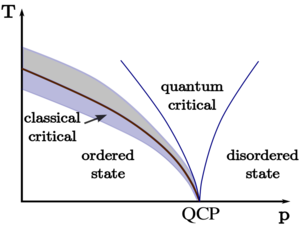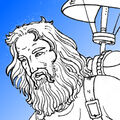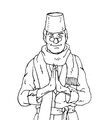Time crystal (nonfiction): Difference between revisions
No edit summary |
|||
| Line 24: | Line 24: | ||
<gallery> | <gallery> | ||
File:David Rittenhouse by Charles Wilson Peale.jpg|link=David Rittenhouse (nonfiction)|link=David Rittenhouse (nonfiction)|1756: Inventor, astronomer, mathematician, clockmaker, and surveyor [[David Rittenhouse (nonfiction)|David Rittenhouse]] constructs an exceptionally accurate [[Orrery (nonfiction)|orrery]], which he will later use to create an early form of time crystal. | |||
File:Leonardo_da_Vinci_in_flight.jpg|link=Leonardo da Vinci|1477: Polymath [[Leonardo da Vinci]] accepts commission to build a mechanical soldier powered by time crystals. | File:Leonardo_da_Vinci_in_flight.jpg|link=Leonardo da Vinci|1477: Polymath [[Leonardo da Vinci]] accepts commission to build a mechanical soldier powered by time crystals. | ||
File:Niles Cartouchian 2.jpg|link=Niles Cartouchian (1900s)|1872: Mathematician, crime-fighter, and alleged time-traveller [[Niles Cartouchian (1900s)|Niles Cartouchian]] uses time crystals to track down and delete the criminal artificial intelligence [[Killer Poke]]. | File:Niles Cartouchian 2.jpg|link=Niles Cartouchian (1900s)|1872: Mathematician, crime-fighter, and alleged time-traveller [[Niles Cartouchian (1900s)|Niles Cartouchian]] uses time crystals to track down and delete the criminal artificial intelligence [[Killer Poke]]. | ||
Revision as of 08:57, 29 April 2018
A time crystal or space-time crystal is a state of matter in which a crystal pattern repeats not in space, but in time, which allows for the crystal to be in perpetual motion.
It is impossible for a time crystal to be in equilibrium with its environment. It is an open system in non-equilibrium with its environment that exhibits time translation symmetry breaking (TTSB).
According to Nature, time crystals represent
... a remarkable type of matter — a collection of quantum particles that constantly changes, and never reaches a steady state. These systems draw stability from random interactions that would normally disrupt other kinds of matter. "This is a new kind of order, one that was previously thought impossible. That's extremely exciting," says Vedika Khemani, part of the Harvard team and previously part of the group that originally theorized the existence of the new kind of state. Experimental physicists are already plotting how to exploit the traits of these strange systems in quantum computers and super-sensitive magnetic sensors.
Time crystals are closely related to the concepts of zero-point energy and the dynamical Casimir effect.
Time crystals are thought to exhibit topological order, an emergent phenomenon, in which nonlocal correlations encoded in the whole wave-function of a system allow for fault tolerance against perturbations, thus allowing quantum states to stabilize against decoherence effects that usually limit their useful lifetime. Preventing decoherence has a wide range of implications: The efficiency of some information theory and quantum thermodynamic tasks may be enhanced greatly when using quantum correlated states.
It also is thought that time crystals could give deeper understanding of the theory of time.
Symmetries are of prime importance in physics and are closely related to the hypothesis that certain physical quantities are only relative and unobservable.
Because a time crystal is a driven (i.e. open) quantum system that is in perpetual motion, it does not violate the laws of thermodynamics. A time crystal does not produce work and it cannot serve as a perpetual energy storage, although it rotates perpetually.
The idea of a time crystal was first put forward by Nobel laureate and MIT professor Frank Wilczek in 2012.
In the News
1756: Inventor, astronomer, mathematician, clockmaker, and surveyor David Rittenhouse constructs an exceptionally accurate orrery, which he will later use to create an early form of time crystal.
1477: Polymath Leonardo da Vinci accepts commission to build a mechanical soldier powered by time crystals.
1872: Mathematician, crime-fighter, and alleged time-traveller Niles Cartouchian uses time crystals to track down and delete the criminal artificial intelligence Killer Poke.
Gem detective and arms dealer Egon Rhodomunde accused of trafficking in illegal life-extension time crystals condensed from living creatures.
Fiction cross-reference
Nonfiction cross-reference
External links:
- Time crystal @ Wikipedia
- World’s first time crystals cooked up using new recipe by Jennifer Ouellette @ New Scientist
- The best way to crystallize time by Elizabeth Gibney @ Nature




